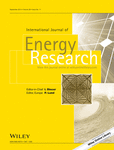Evaluation of GTHTR300A nuclear power plant design with dry cooling
SUMMARY
GTHTR300A is a power plant design based on high-temperature gas-cooled reactor. It relies on exclusive dry cooling for production and in emergency, a practice not found in existing and other proposed plants. Besides well-known environmental benefits, successful use of dry cooling may provide the new found safety advantage because it avoids water-related event such as tsunami or generation of explosive hydrogen. In the GTHTR300A, the reactor coolant is used to drive a direct-cycle gas turbine, and further dry systems are provided to meet the three general cooling requirements. The system to reject power generation waste heat couples the reactor and a natural draft air cooling tower by a closed helium circulation loop. Careful design and operational measures are introduced to ensure the viability of economics, which proves difficult in existing plants. Separately, a natural convective air system is used to remove core decay heat in emergency. Detailed simulation shows that the system placed outside the reactor can maintain the temperatures of reactor fuel and structure below design limits even in case of simultaneous loss of coolant and station blackout. Finally, the study shows that the spent fuel may be stored in dry wells and safely cooled by natural convective air. By reliance on economic and safe dry cooling, the design succeeds in making inland construction feasible even without source of cooling water, and the resulting benefit to safety and environment is compelling in light of the 2011 Fukushima accident due to tsunami. Copyright © 2014 John Wiley & Sons, Ltd.




